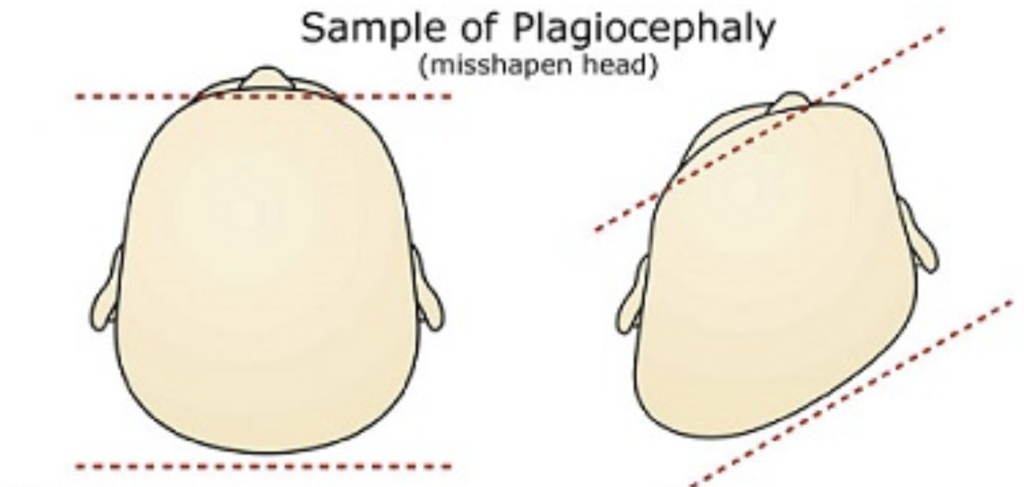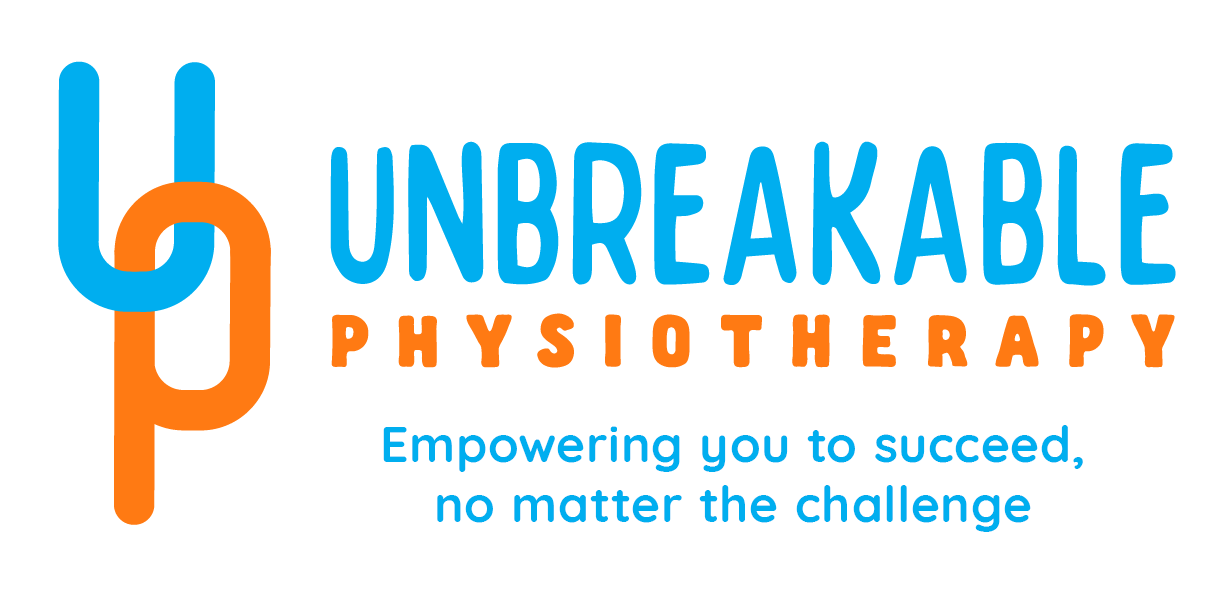Deformational Plagiocephaly:
Does your baby have a flat spot on its head? Did you know that this can usually be treated very effectively through physiotherapy?
Babies skulls are soft and easily mouldable. Fun fact, a babies brain and skull increases in size by 200% in the first six months. That’s why getting onto a flat spot early is important!
A flat spot can be caused by many factors but most often it is due to a baby lying on its back for too long with a preference to turn its head to one direction. A head preference can also be due to a tight muscle in the neck which is called torticollis. Plagiocephaly does not impact a babies brain development however it can change the appearance of the skull and facial features. Due to the very important ‘Back To Sleep’ SIDS campaign which was developed in the 1990s, this saw an increase in the incidence of plagiocephaly. This campaign saw a major reduction in infant mortality indicating the importance of following the guidelines and ensuring your baby is on its back to sleep. However, good news, there are lots of things you can do throughout the day to influence the shape of your babies head!

(The Royal Childrens Hospital, 2023)
A good way to identify plagiocephaly is taking a bird’s eye view photo from above. Often you will see that one ear is shifted forward and the forehead on the same side is pushed forward. One side of the back of the head will also be flatter. The face can be asymmetrical with one side more forward than the other. Your baby may also have a bald spot on the side that is flat. Babies that are at a higher risk of plagiocephaly are typically found to be completing minimal supervised tummy time. Tummy time is one of the key strategies in the management of plagiocephaly.
Your physiotherapist will be able to provide an assessment and provide you with individualised treatment strategies that will suit your baby and your family. Treatment typically includes positioning strategies, stretches and exercises to assist with the shape of your babies’ head but also with their general development. If physiotherapy is unsuccessful sometimes babies will be required to use a cranial orthoses helmet. This is for very severe cases which your physiotherapist will be able to determine if this is required.
What can I do at home in the mean time?
– Tummy time is your best friend! Any time spent off the back of the head the better – Encourage baby to look away from the flat spot – supervised side lying play can be a really nice position for babies to play in – Consider the position of your babies cot – if baby is always looking to one side because this is where the excitement is (eg. You, the door, anything of interest) alternate the end of the cot that baby sleeps in. It is important not to use any props in the cot to encourage your baby to look the other way as this goes against the SIDS guidelines and recommendations. – Feed from both sides
If you think that your baby is developing a flat spot on the back of its head it is important to have this assessed by your local paediatric physiotherapist.
Balocerkowski, A. E., Vladusic, S. L., & Wei Ng, C. (2008). Prevalence, risk factors, and natural history of positional plagiocephaly: a systematic review. Developmental Medicine & Child Neurology, 50(8), 577-789
NSW Government (2020). Management of Positional Plagiocephaly by Allied Health Professionals. Retrieved from
https://www1.health.nsw.gov.au/pds/ActivePDSDocuments/GL2020_013.pdf Saeed, N. R., Wall, S.A., & Dhariwal, D. K. (2008). Management of positional plagiocephaly. Archives of Disease in Childhood, 93, 82-84
The Royal Children’s Hospital. (2023). Plagiocephaly – misshapen head. Retrieved 06/11/23 from https://www.rch.org.au/kidsinfo/fact_sheets/plagiocephaly_misshapen_head/
